It wasn’t just cold, it was crazy cold. The more the mercury hovers around zero, the more it goes from feeling like winter, to downright post-apocalyptic. Out in the countryside, the monoscape of white in such a broad space just adds to that notion. But really, it’s just a Thursday in January. After taking a wrong turn or two out on the snow-soaked back roads near the ridge in Mabton, Shelley and I finally pull up to the Martinez Lambing Camp.
We see a newly parked hay truck and are amused to find the back side bales with a frozen sheet of ice coating them from the drive. Pretty soon Mark and Nick Martinez pull up in an old truck to load some of the bales and take them back to the sheep. 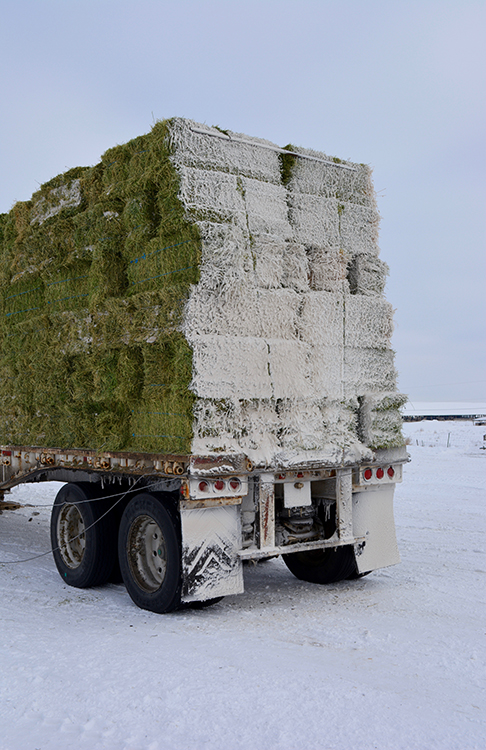 They tell us to park out of the way. With thousands of sheep around, something is always going on. Today though, is special. It’s the first day of shearing, and there’s a palpable focus in the air.
They tell us to park out of the way. With thousands of sheep around, something is always going on. Today though, is special. It’s the first day of shearing, and there’s a palpable focus in the air.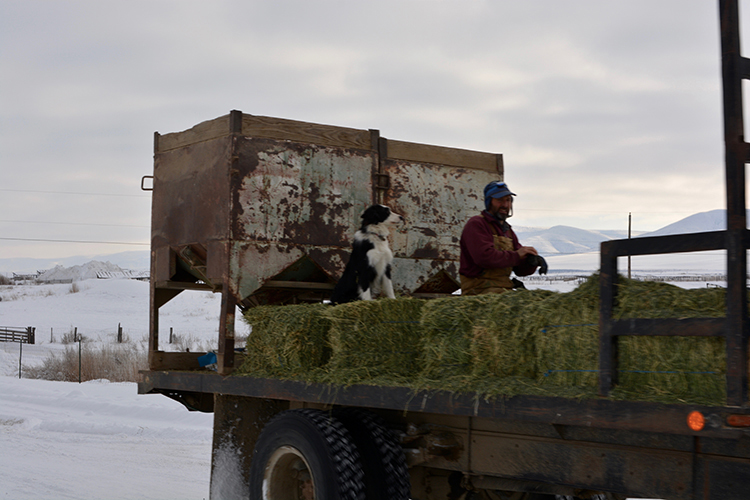
As we approach the action, we have a brief chat with Mark. His grandfather came here from Spain as a shepherd almost 100 years ago. He dreamed big and worked hard and founded S. Martinez Livestock, a diversified company his sons and grandsons run today. Mark walks us over to the temporary structures used to shear the sheep that are housed under the roof of an open barn and we move in to get a closer look. 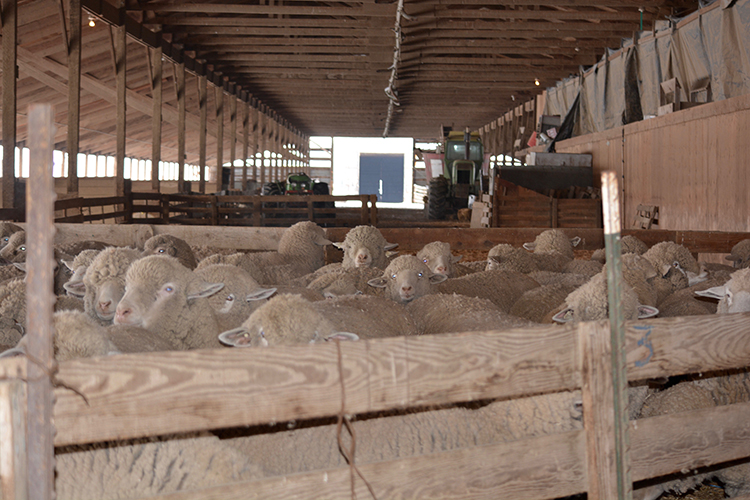 Bits of wool are everywhere. The buzz of many electric shears hum into white noise while soft bleating from the sheep come at us from all directions. He tells us that about 3,000 ewes will be shorn in the next three days.
Bits of wool are everywhere. The buzz of many electric shears hum into white noise while soft bleating from the sheep come at us from all directions. He tells us that about 3,000 ewes will be shorn in the next three days.
 Helping with the enormity and specificity of the work are several H-2A workers from Peru and Uruguay. Moving through, we see that the sheep are led from holding pens into a single file line, up a ramp to the shearing area where several shearers are at work.We get a peek inside where it’s all business as usual, the shearers finding flow as they move from one animal to the next. The shearing shacks are largely enclosed with openings at the bottom where the freshly shorn wool is placed to be picked up.
Helping with the enormity and specificity of the work are several H-2A workers from Peru and Uruguay. Moving through, we see that the sheep are led from holding pens into a single file line, up a ramp to the shearing area where several shearers are at work.We get a peek inside where it’s all business as usual, the shearers finding flow as they move from one animal to the next. The shearing shacks are largely enclosed with openings at the bottom where the freshly shorn wool is placed to be picked up. 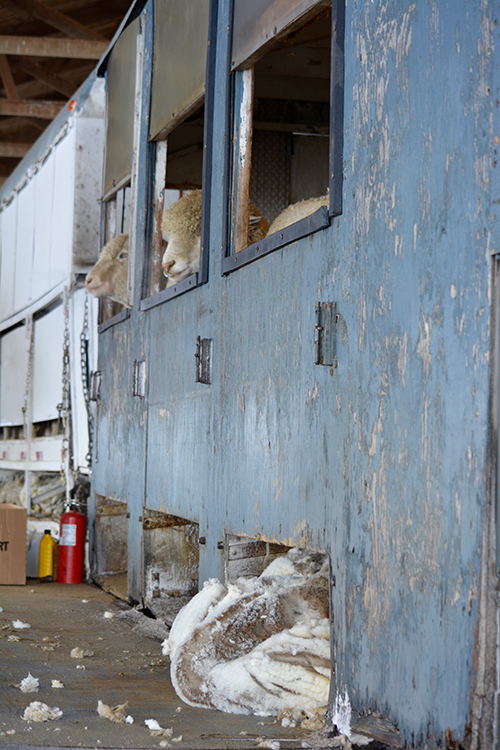
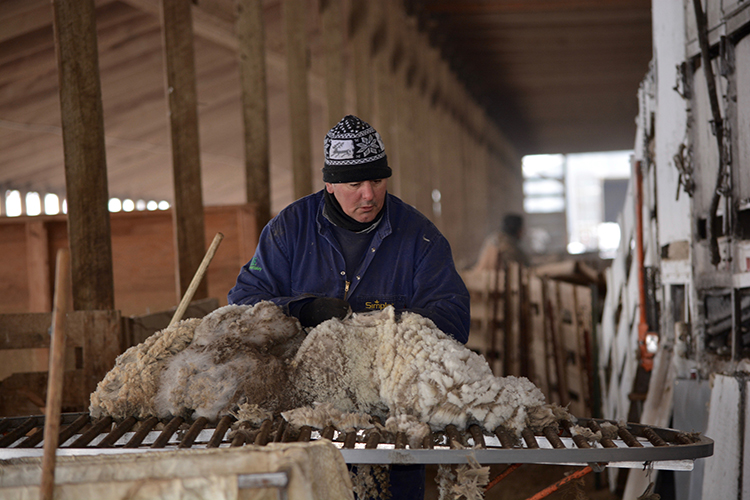
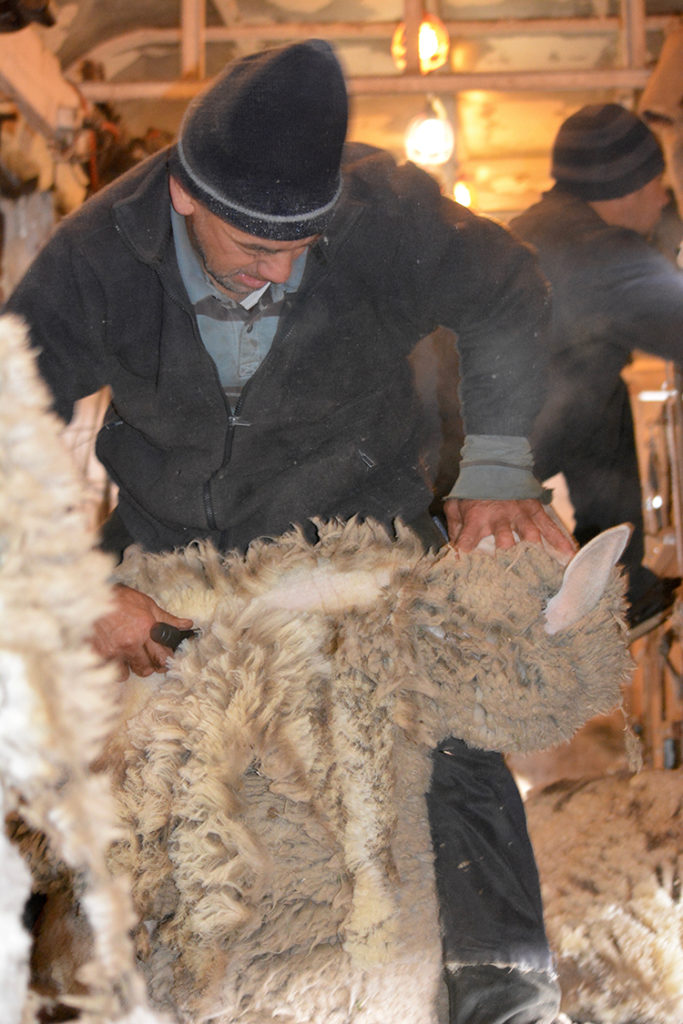 The belly wool is the first to go. Less fine and more dirty, it is grouped separately. The back wool is quickly graded largely by touch and looking at individual fibers and length and similarly graded wools are grouped together.
The belly wool is the first to go. Less fine and more dirty, it is grouped separately. The back wool is quickly graded largely by touch and looking at individual fibers and length and similarly graded wools are grouped together. 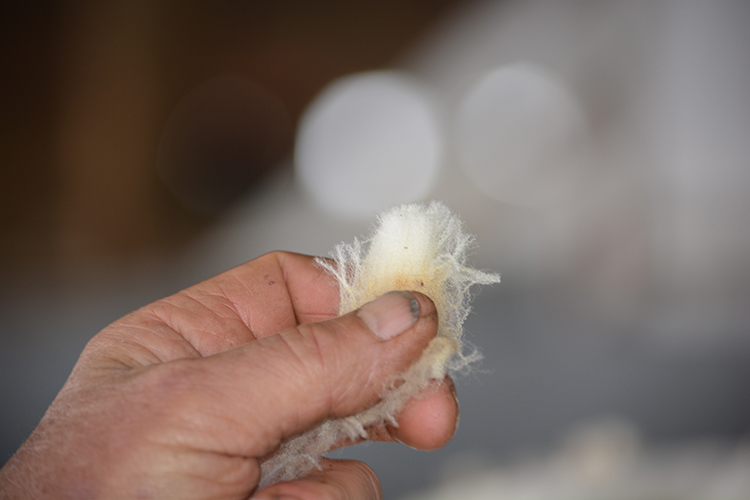 It’s then baled up to be shipped out. As we are getting a lesson on looking at individual fibers, I am surprised that my ungloved hand is noticeably warming up just holding a small piece.
It’s then baled up to be shipped out. As we are getting a lesson on looking at individual fibers, I am surprised that my ungloved hand is noticeably warming up just holding a small piece.
On and on it will go, eight hours a day for the next three days or until the ewes are done. Allthat wool seems very welcome in this cold world. The sheep will be put in a covered space until they recoup their insulation. When they have their babies, the lambs will be able to find their mother’s milk that much easier. I have never seen anything like it. A pretty amazing thing to witness, and while unique, its just another winter day in the Yakima Valley.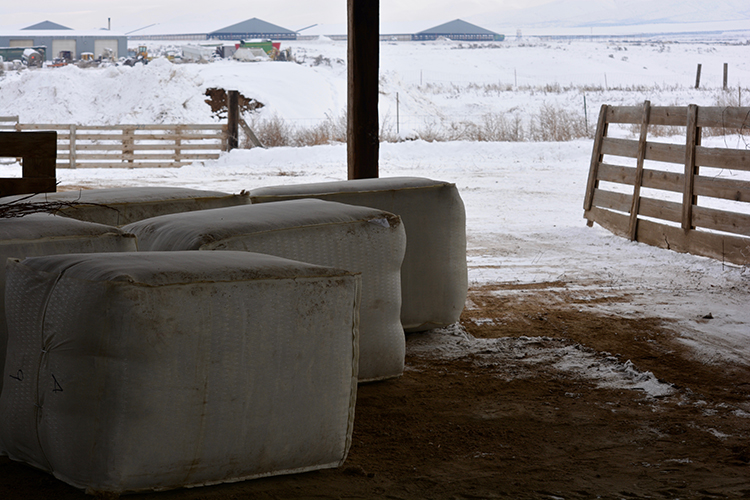
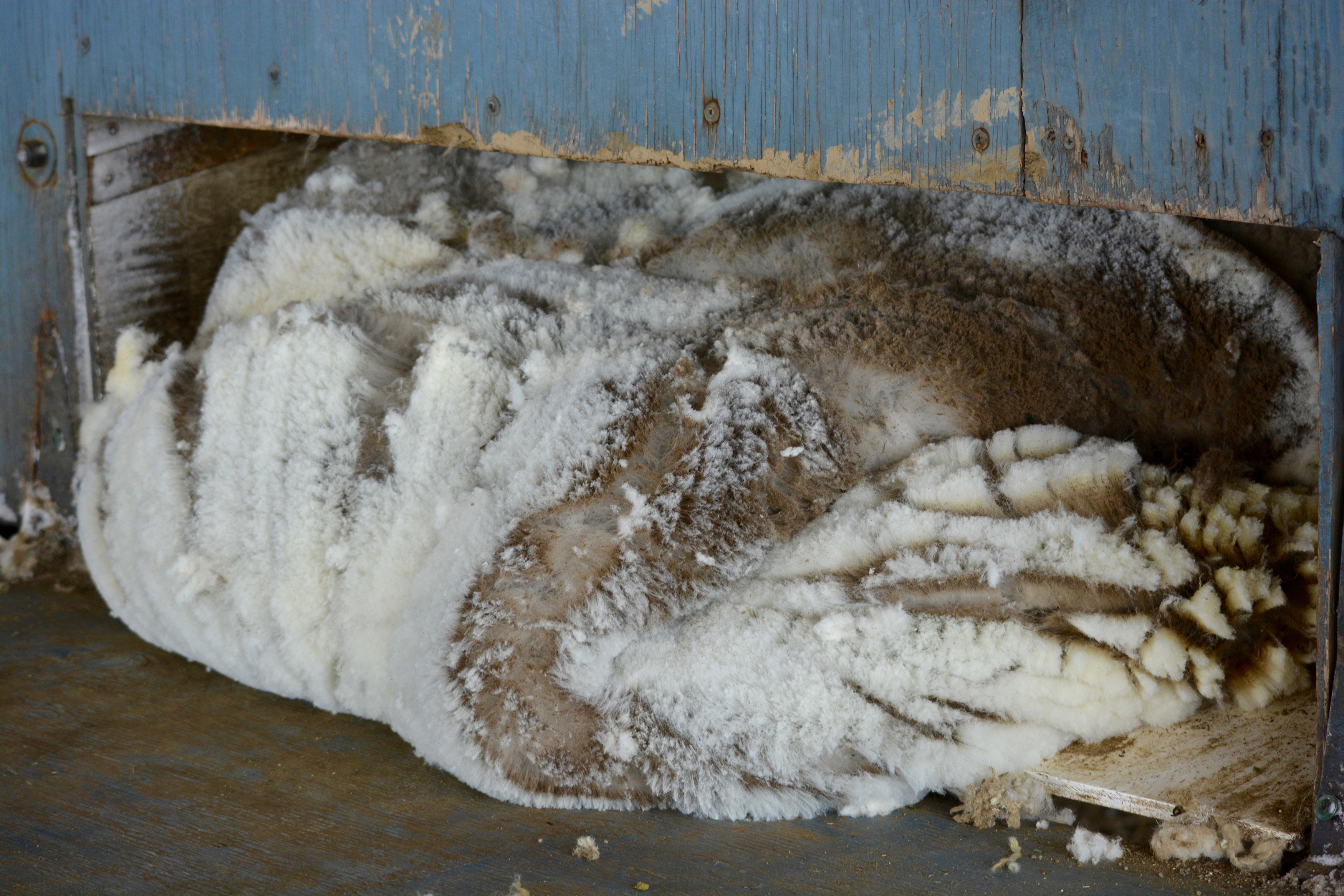





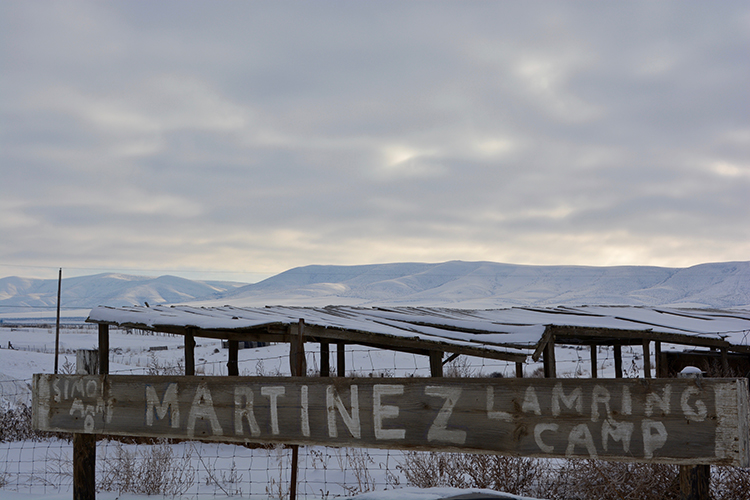
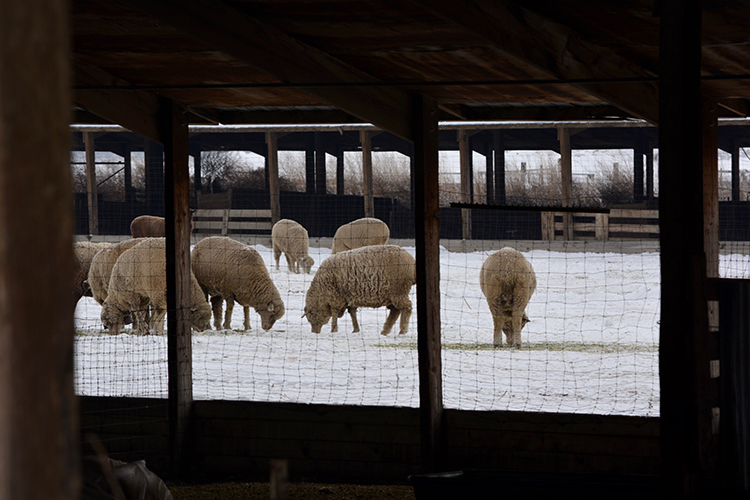
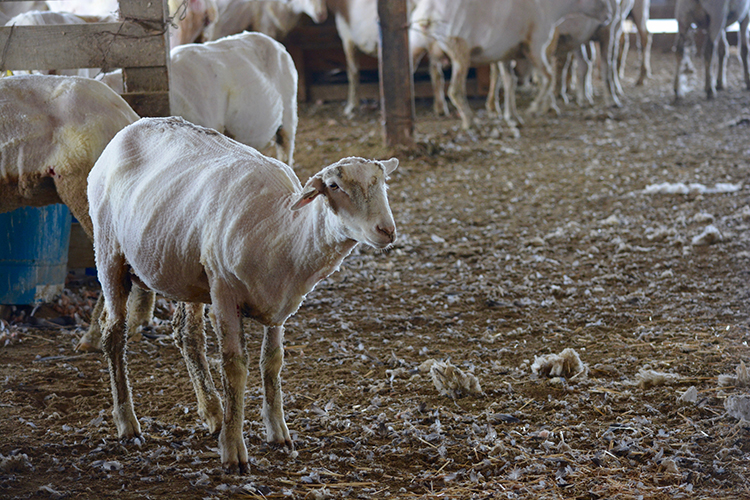
Beautiful story. Thanks. I never did get to see a shearing while living in the Yakima Valley. Really appreciate the stories from a place I love.
This is another interesting article with very good photos. I’d like to know more, however, about the workers who shear the sheep. How many are there in all? What percentage are local and what percentage are H-2A. How are they acquired? Do the same ones come every year? How long do they stay at the Martinez sheep ranch — just for the shearing or longer?
Great story, beautiful photos, thanks
How interesting! I knew about the Martinez’ sheep ranch, but I thought it was for the meat and milk that they raised the sheep. How dumb of me not to think of the wool.
What a great tradition and business the first Martinez in The Valley brought from Spain.
Hello Andreana Gamache! Loved reading this article & seeing photos. Wish the poor sheep didn’t have to be sheared in middle of winter!
The end of the article states why. So the babies can find mama’s milk more easily. Sheep naturally produce their babies in winter. What wasn’t said was that with the fleece removed, the birth process is also lots cleaner and less chance of infection for mom and baby.
Great article. Great photos. Well done.
Well done article Andreana!
Great article and photos!
What a cool article. About 15 years ago, John and I got 4 bummer lambs from the Martinez family. At that time, I had to be at work really early, so we would get up at 4:00 a.m. to bottle feed the lambs. They were so cute with their little tails going back and forth. There names were Tulip, Daisy, Rose, and Jesibel. It was a lot of work, especially when we had cows, goats, pigs, chickens, a goose, a dog, a cat, and a 10 acre farm to tend to. I always enjoy your articles as I find many times they bring back fond memories!
Will this be on any local news? Such an event should be shared. These folks have been serving the valley for decades. I love the meat, when I can get it.